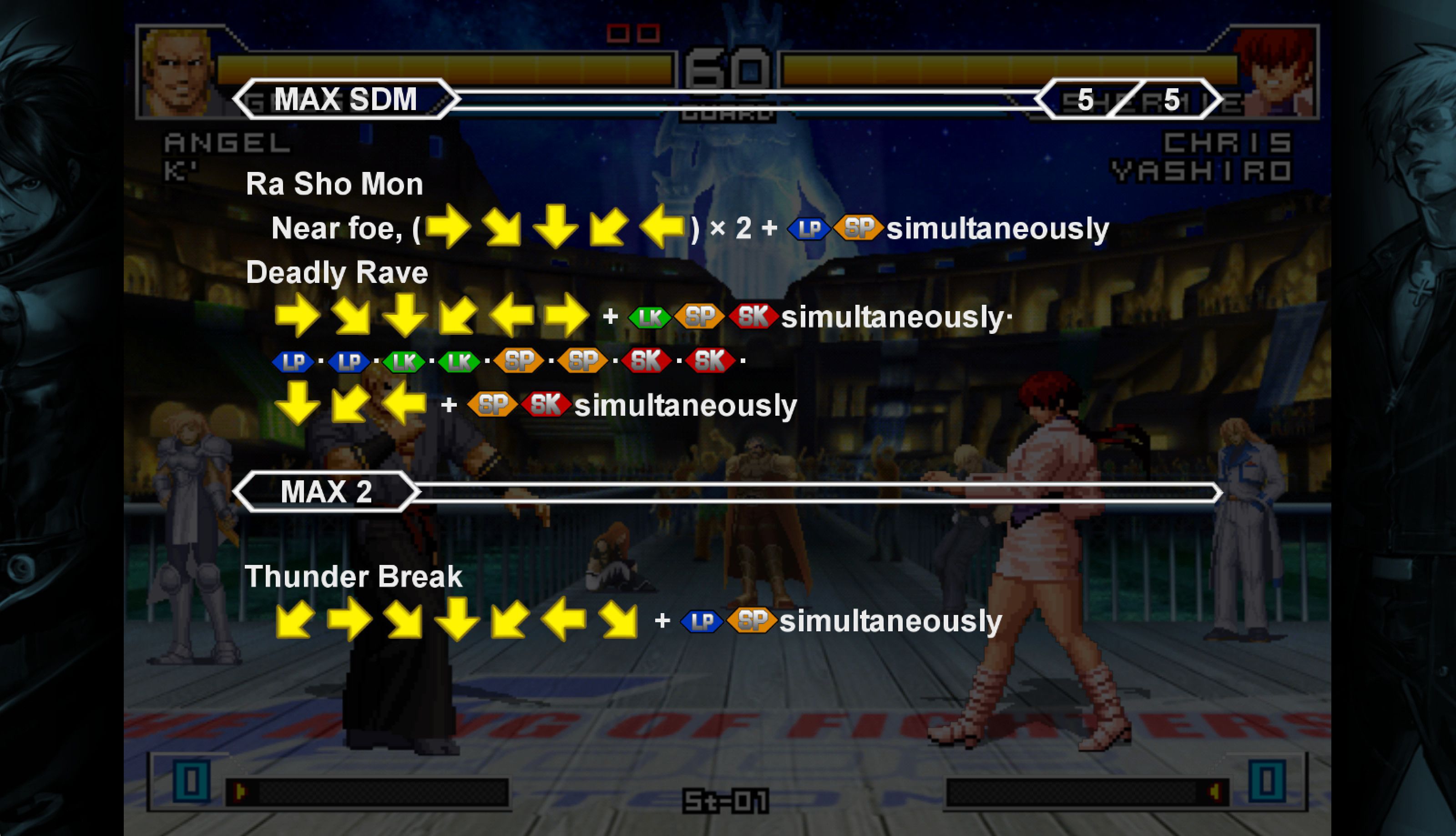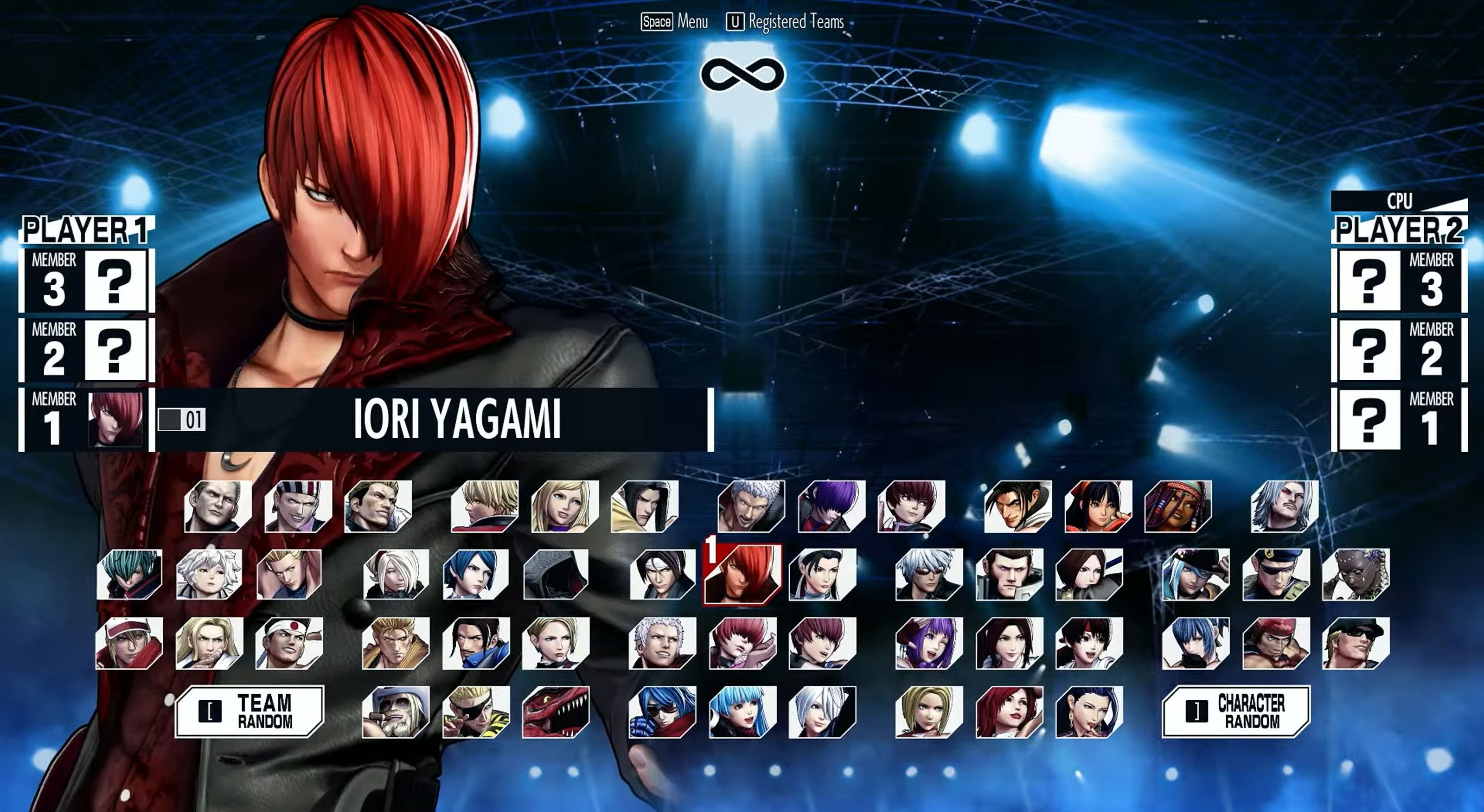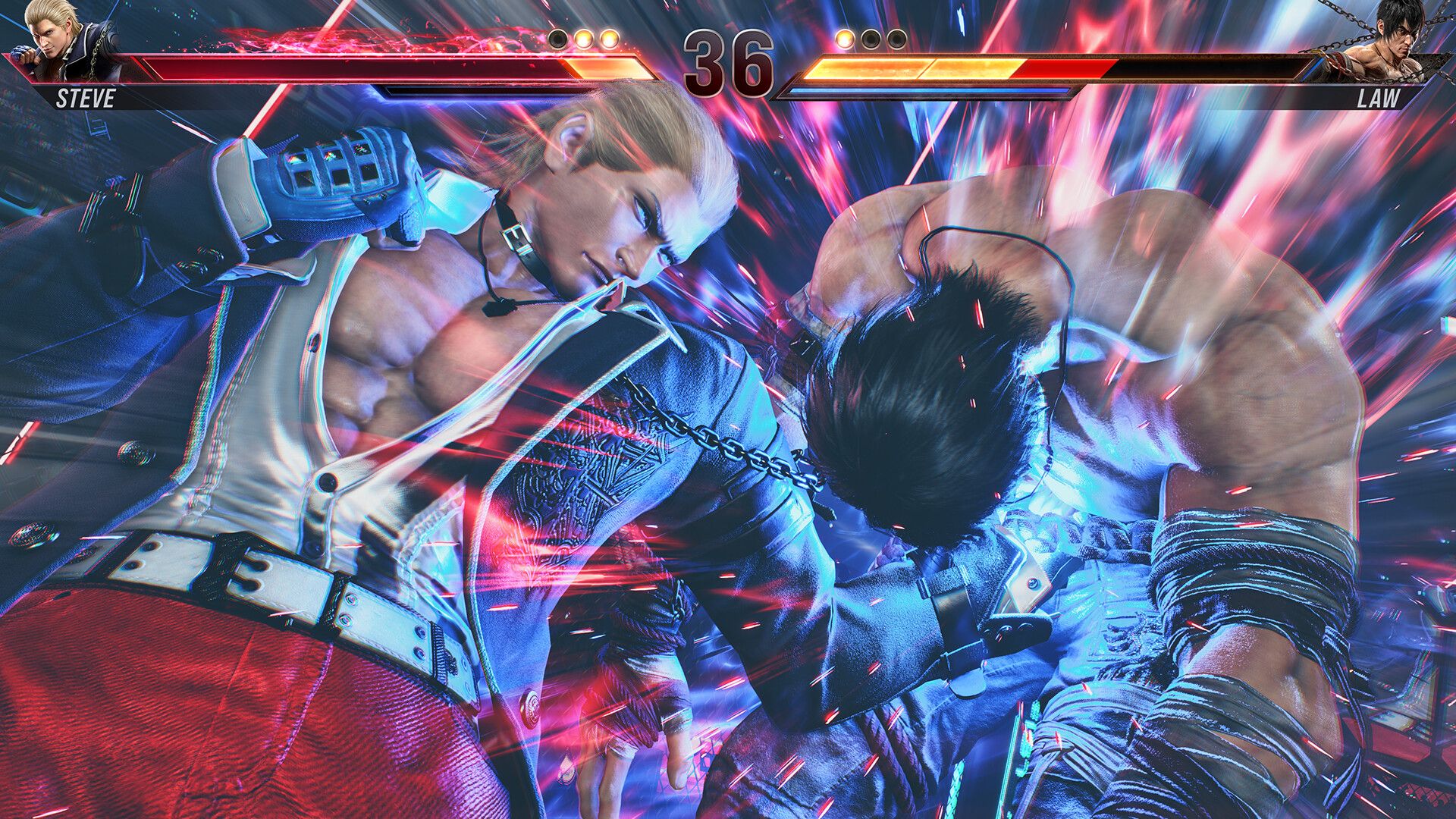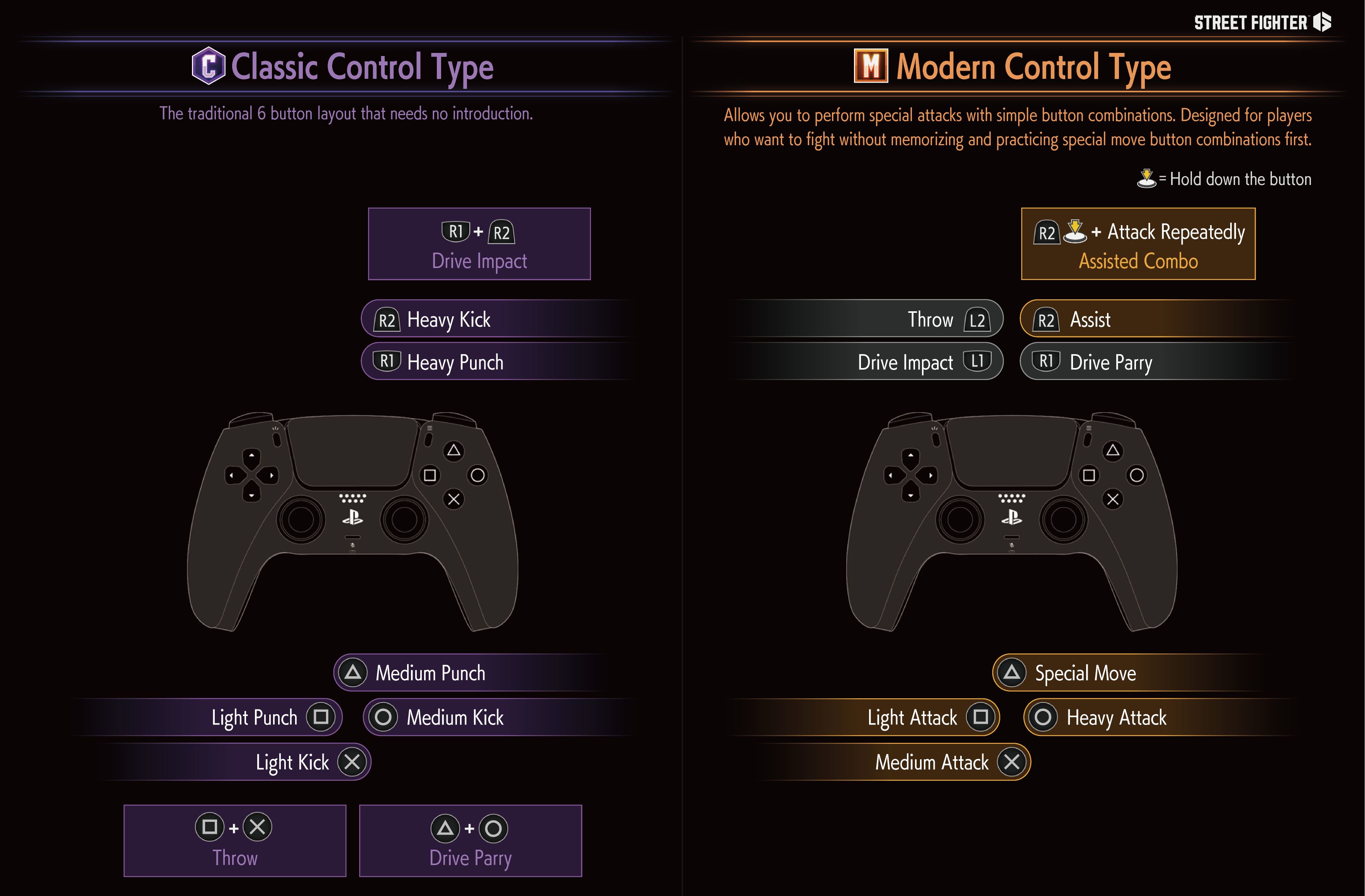Summary
- Motion inputs in fighting games vary in complexity but are essential for balancing character move sets.
- Motion inputs contribute to more satisfying gameplay experiences and provide a tactile quality unmatched by other control schemes.
- Recent fighting game releases have introduced more accessible controls, making the genre more newcomer-friendly without removing the traditional inputs.
Ever since Street Fighter II entered arcades in 1991, motion inputs have been a defining part of the fighting game genre. Not everyone loves the complexity of motion inputs, and many people have turned off the genre altogether because of them, but there’s a reason they’ve stuck around for so long.
What Makes Motion Inputs So Divisive?
If you’ve ever played a traditional fighting game, you’ve almost certainly dealt with motion inputs. “Motion inputs” are button commands that require you to perform a series of consecutive directional inputs to execute specific attacks. For example, fans of Street Fighter will recognize the quarter circle forward input—which involves pressing “down” and pushing the stick or directional pad in a 90° motion to the right—as the beginning of the input command for Ryu and Ken’s “Hadouken.”
Motion inputs vary in complexity. Street Fighter II‘s hadouken is a famously simple move to perform, only requiring players to perform a quarter circle forward and press a “punch” button. However, every fighting game move set features a mix of simple commands and lengthy inputs with difficult motions.
Some attacks require you to perform multiple quarter circles and button presses in quick succession. Others involve more complex motion inputs such as half-circles (180° directional inputs), charge motions (holding one directional input before quickly pressing the opposite direction), or dragon punch (DP) motions, which begin with a left or right directional before pressing downward in a z-shaped motion.
Most motion inputs aren’t all that difficult to perform on their own, but the real challenge comes from performing under pressure. Things get tricky when you have to perfectly execute multiple consecutive motions to perform a move while fighting another player. Taking your time to execute these motions will leave you vulnerable, placing you under pressure to complete the inputs as fast as possible. This may not seem too difficult for longtime fighting game fans who have mastered these inputs, but inexperienced players are likely to repeatedly fumble the more complex motions.
This is where motion inputs differ from other video game control schemes. In contrast to the simple and intuitive controls found in other genres, motion inputs require practice to properly understand. If you want to learn anything beyond the fundamentals of a character’s move set, you’re encouraged to spend time memorizing and practicing difficult motions and precise inputs. Learning motion inputs can be a massive time commitment, and it’s a large part of why many players struggle to get into fighting games.
This admittedly isn’t helped by the fact that some fighting games like Tekken 7 and The King of Fighters XV feature enormous rosters with over 50 playable fighters, with some Tekken characters possessing over 100 unique commands and attack strings. You certainly aren’t expected to learn how to play every character, but just figuring out where to start can be overwhelming for first-time players.
Motion inputs will eventually seem less daunting once you get used to them, but they only represent the start of the fighting game genre’s complexity. It’s not enough just knowing how to perform motion inputs; you will also need to learn when to use these attacks, when to block, how to read your opponents, and make use of other mechanics to play at a high level. If you want to get really technical, study a character’s frame data to find the strengths and weaknesses of their individual moves.
Fighting games are already complicated on their own, which is why some players see motion inputs as an unnecessary roadblock for newcomers to the genre. Beginner-friendly fighting game franchises like Mortal Kombat and Super Smash Bros. have proven that fighting games can still deliver deep mechanics and satisfying combat with heavily simplified inputs.
Despite these issues, traditional motion inputs are still widely used among prominent fighting game franchises like Street Fighter and Tekken. This isn’t likely to change anytime soon, as many fighting game fans (myself included) actually prefer playing with complex motion inputs. They may seem obtuse and needlessly complicated, but there are a few reasons that fighting game fans have grown to love motion inputs.
Motion Inputs Are Supposed to Be Challenging
As I mentioned before, some motion inputs are tougher to execute than others, but that’s an important part of the genre’s design. Fighting games often use the varying degrees of input complexity as a subtle means of balancing each character’s move set. Basic melee and projectile attacks are quick and easy to perform but usually deal small amounts of damage. More powerful moves usually come with a downside, such as a slow startup animation, reliance on an expendable meter, or a longer and more complicated motion input.
Let’s use Potemkin from Guilty Gear Strive as an example. Some of his fastest attacks are the leaping punch “Mega Fist” and the ranged “Slide Head,” both of which are executed with a simple quarter circle forward followed by a single button press. However, these attacks are balanced out by the fact that they are heavily telegraphed, easily blockable, and deal fairly low damage.
Compare that with his signature move, “Potemkin Buster,” which requires you to perform a half-circle motion into a directional input and a button press. Successfully performing and landing the attack will lead to a devastating command grab that can wipe your opponent’s health in only three hits.
If the Potemkin Buster or similarly damaging moves could be performed with a single button press, most players would have no problem spamming it in every single match. There wouldn’t be any incentive to use other moves or even other characters, resulting in a severely unbalanced (and really boring) experience.
Thankfully, Guilty Gear Strive and most other fighting games design their characters around the limitations of motion inputs. Longer attacks have a larger margin of error, but successfully executing them is rewarded with a powerful result. Due to the time they take to input, you won’t always have an opportunity to perform these moves, forcing you to also make use of weaker attacks with faster startups or simpler inputs. This design allows fighting game characters to possess both extremely powerful attacks without making the rest of their move set obsolete.
Motion inputs also allow fighting game characters to possess expansive and varied move lists. A single button can be used for numerous distinctive attacks based on the corresponding directional inputs. Likewise, the same directional motion can be used for different attacks, depending on the button presses that follow.
Even if you disregard their impact on game balancing and character variety, motion inputs are still satisfying to pull off. When you’re rushing to perform a complicated move during a fight, landing your attack feels immensely rewarding. The harder the input is to execute, the better it feels when you don’t mess up in the middle of battle.
It’s also worth noting that motion inputs are a lot more standardized than most people realize. The vast majority of 2D fighting games borrow their motion inputs and entire character archetypes from the Street Fighter and The King of Fighters series. If you start playing a bunch of different fighting games or even stick to the same series, you’ll find that the inputs you learn from one game can be used in many others. In this way, motion inputs make fighting games seem more accessible if you can get past the initial learning barrier.
Most of all, motion inputs provide a tactile quality that other control schemes can’t replicate. Sending your fingers into a scramble as you unleash a barrage of fireballs or windup for a crushing blow helps you feel much more involved in the game than simply mashing the same buttons over and over. It also makes the trial-and-error process of learning these inputs feel a lot more exciting, even if some games are frustratingly difficult to master.
Motion Inputs Are Becoming More Accessible
Fighting games have always been notoriously unfriendly to new players, but recent releases are making an effort to change that. Along with their renewed focus on delivering substantial single-player content and detailed tutorials for newcomers, modern fighting games have started using a beginner-friendly alternative to traditional motion inputs.
Beginner-friendly controls aren’t anything new for fighting games, but they historically haven’t been very helpful. Ultimate Marvel vs. Capcom 3 and Guilty Gear Xrd Rev 2 both feature “simple” or “stylish” control modes that allow players to perform flashy attack strings by simply mashing the attack buttons. Despite being easier to use, these modes also restrict you from using certain moves or performing complex combos. These modes essentially place a handicap on players and ultimately aren’t worth using unless you’ve never touched a fighting game before.
Thankfully, some recent games like Street Fighter 6 and Fatal Fury: City of the Wolves have refined this idea with their “modern” controls. As with the “simple” controls seen in older titles, “modern” controls are a beginner-friendly alternative to motion inputs, but they aren’t as restrictive. Rather than removing motion inputs outright, many have been simplified to be easier and quicker to execute.
Modern control modes are not a perfect solution, as they also allow powerful attacks like Zangief’s command grabs in Street Fighter 6 to be performed much faster. To balance this, the mode also removes certain moves from every character, though there’s still enough options to ensure each character has some flexibility in their play style when using modern controls.
Similarly, recent entries in infamously hardcore fighting game franchises have streamlined characters’ move sets and simplified their inputs. Guilty Gear‘s most gimmicky characters, like the dual greatsword-wielding Ramlethal and tower-defense-centric Jack-O, had their unique mechanics streamlined for Guilty Gear Strive. These characters originally featured play styles that were radically different from the rest of the Guilty Gear cast, but their current move sets in Strive feel much closer to the rest of the game’s roster.
The King of Fighters reworked many of its most difficult movement inputs to be easier to execute in KOF XIV and XV. However, these games kept some of the series’ traditions by retaining the nightmarish “pretzel motion” of Geese Howard’s “Raging Storm” and the dizzying complexity of Ángel’s unconventional move list.
If motion inputs put you off trying out fighting games in the past, there has never been a better time to give the genre a second chance. Fighting games are more accessible than they’ve ever been before, and even the most hardcore series are starting to lighten up.
However, I still recommend playing with the classic control scheme. It can feel daunting at first, but it’s easily the most exciting way to play if you’re willing to put in the effort.








